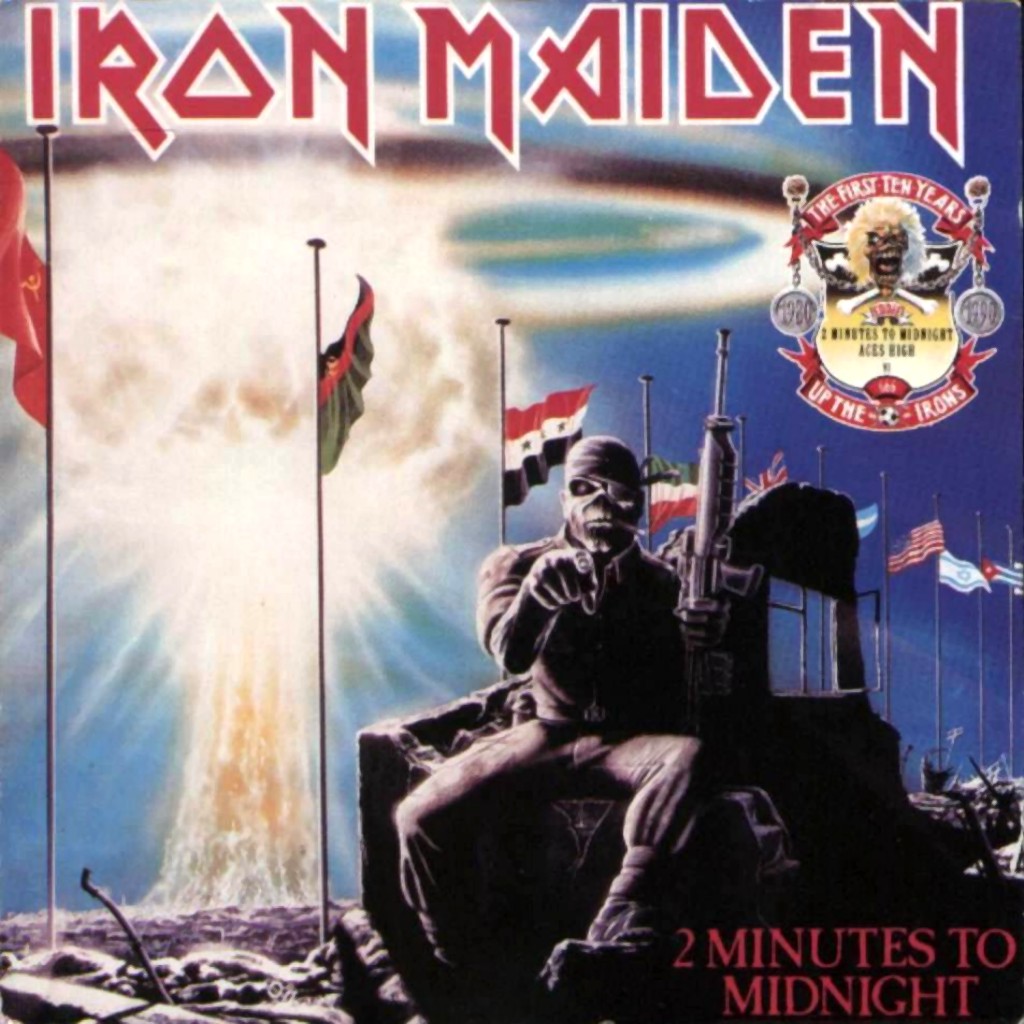The Doomsday Clock is a symbolic clockface maintained since 1947 by the Board of Directors of the Bulletin of the Atomic Scientists at the University of Chicago. It uses the analogy of the human race being at a time that is "minutes to midnight" where midnight represents destruction by nuclear war. The clock has appeared on the cover of each issue of the Bulletin of the Atomic Scientists since its introduction. The clock is currently set to six minutes to midnight, most recently updated on January 17, 2007.
The Doomsday Clock was started at seven minutes to midnight during the Cold War in 1947, and has subsequently been moved forwards or backwards at intervals, depending on the state of the world and the prospects for nuclear war. Its setting is relatively arbitrary, set by the Board of Directors at the Bulletin of the Atomic Scientists in response to global affairs. The setting of the clock has not always been fast enough to cope with the speed of global events, either; one of the closest periods to nuclear war, the Cuban Missile Crisis in 1962, reached its head and resolution in a number of weeks, and the clock either could not be changed or was not changed to reflect any of this at the time. Nevertheless, the changing of the clock usually does provoke attention.
It was announced on 13 January, 2007 that the clock would move forward on 17 January, 2007 to reflect what the Board of Directors call worsening nuclear and climate threats to the world. Before this, the clock was changed in 2002 back to seven minutes to midnight, after recent deterioration in international relations. Each time nuclear conflict comes closer, it is moved forward. Conversely, the minute hand moves back as world events improve. It has been moved 17 times in response to international events since its initial start at seven minutes to midnight in 1947:
1949 - The Soviet Union tests its first atomic bomb. Clock changed to three minutes to midnight (four minutes closer to midnight).
1953 - The United States and the Soviet Union test thermonuclear devices within nine months of one another. Clock changed to two minutes to midnight (one minute closer, its closest approach to midnight to date).
1960 - In response to a perception of increased scientific cooperation and public understanding of the dangers of nuclear weapons, clock is changed to seven minutes to midnight (five minutes further from midnight).
1963 - The United States and Soviet Union sign the Partial Test Ban Treaty, limiting atmospheric nuclear testing. Clock changed to twelve minutes to midnight (another five minutes further).
1968 - France and China acquire and test nuclear weapons (1960 and 1964 respectively), wars rage on in the Middle East, Indian subcontinent, and Vietnam. Clock changed to seven minutes to midnight (five minutes closer to midnight).
1969 - The U.S. Senate ratifies the Nuclear Non-Proliferation Treaty. Clock changed to ten minutes to midnight (three minutes further from midnight).
1972 - The United States and the Soviet Union sign the SALT I (Strategic Arms Limitation Treaty) and the Anti-Ballistic Missile Treaty. Clock changed to twelve minutes to midnight (two minutes further).
1974 - India tests a nuclear device (Smiling Buddha), SALT II talks stall. Clock changed to nine minutes to midnight (three minutes closer to midnight).
1980 - Further deadlock in US-USSR talks, increase in nationalist wars and terrorist actions. Clock changed to seven minutes to midnight (two minutes closer).
1981 - Arms race escalates, conflicts in Afghanistan, South Africa, and Poland add to world tension. Clock changed to four minutes to midnight (three minutes closer).
1984 - Further escalation of the arms race under the U.S. policies of Ronald Reagan. Clock changed to three minutes to midnight (one more minute closer).
1988 - The U.S. and the Soviet Union sign treaty to eliminate intermediate-range nuclear forces, relations improve. Clock changed to six minutes to midnight (three minutes further from midnight).
1990 - Fall of the Berlin Wall, success of anti-communist movements in Eastern Europe, Cold War nearing an end. Clock changed to ten minutes to midnight (four minutes further).
1991 - United States and Soviet Union sign the Strategic Arms Reduction Treaty. Clock changed to seventeen minutes to midnight (seven minutes further, its greatest distance from midnight so far).
1995 - Global military spending continues at Cold War levels; concerns about post-Soviet nuclear proliferation of weapons and brainpower. Clock changed to fourteen minutes to midnight (three minutes closer to midnight).
1998 - Both India and Pakistan test nuclear weapons in a tit-for-tat show of aggression; the United States and Russia run into difficulties in further reducing stockpiles. Clock changed to nine minutes to midnight (five minutes closer).
2002 - Little progress on global nuclear disarmament; United States rejects a series of arms control treaties and announces its intentions to withdraw from the Anti-Ballistic Missile Treaty; terrorists seek to acquire nuclear weapons. Clock changed to seven minutes to midnight (two minutes closer).
2007 - Updated to six minutes to midnight.





